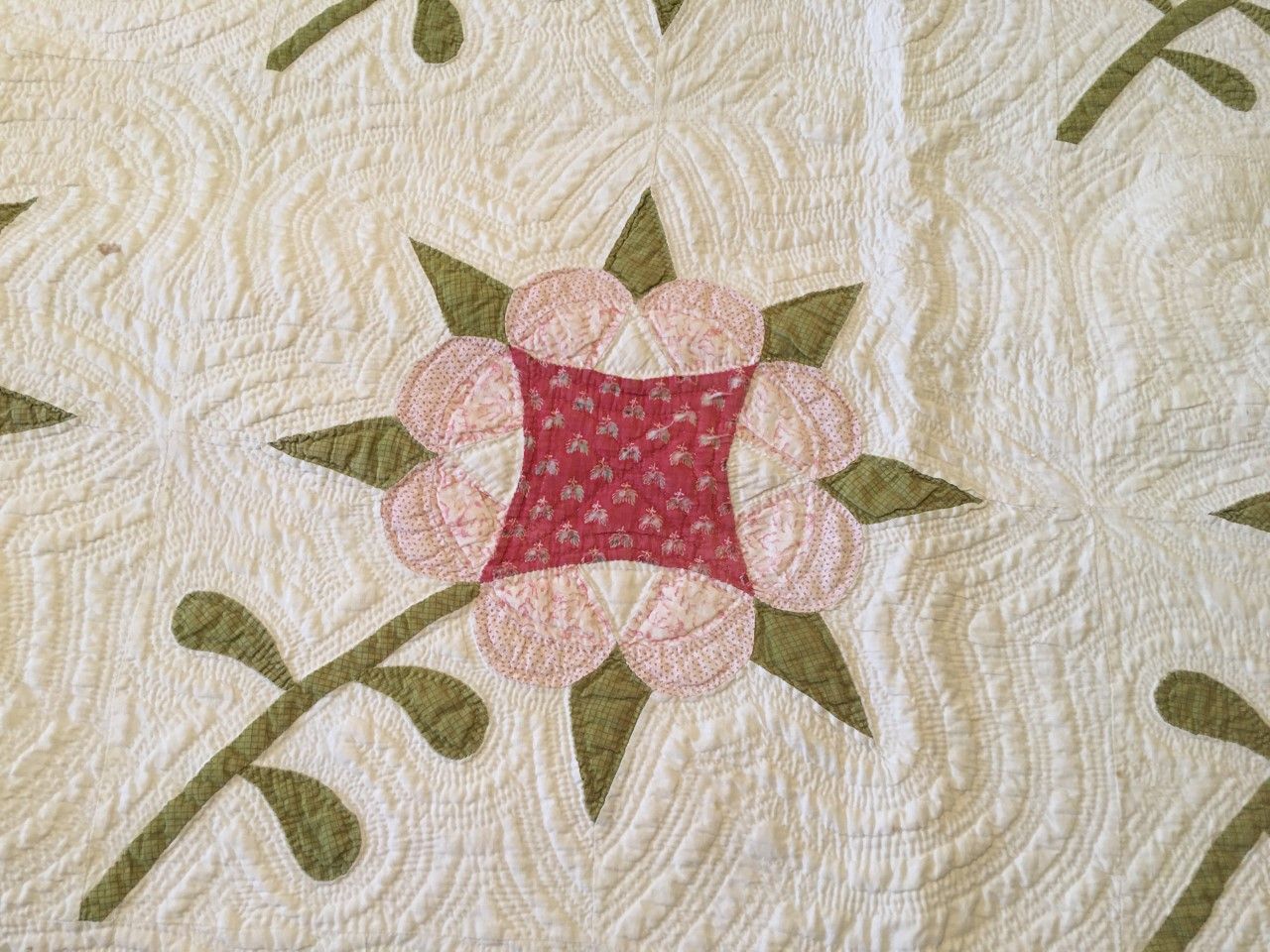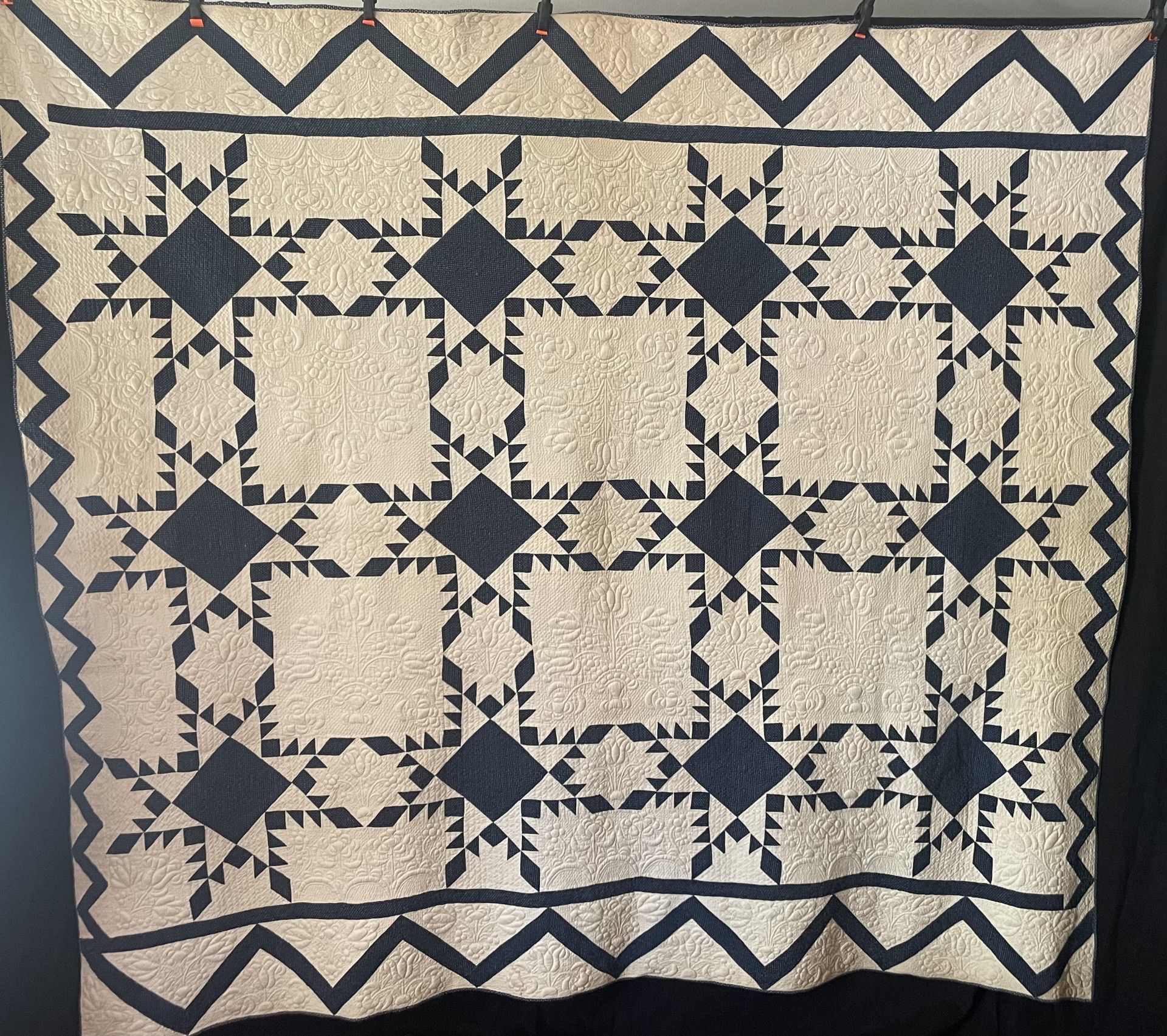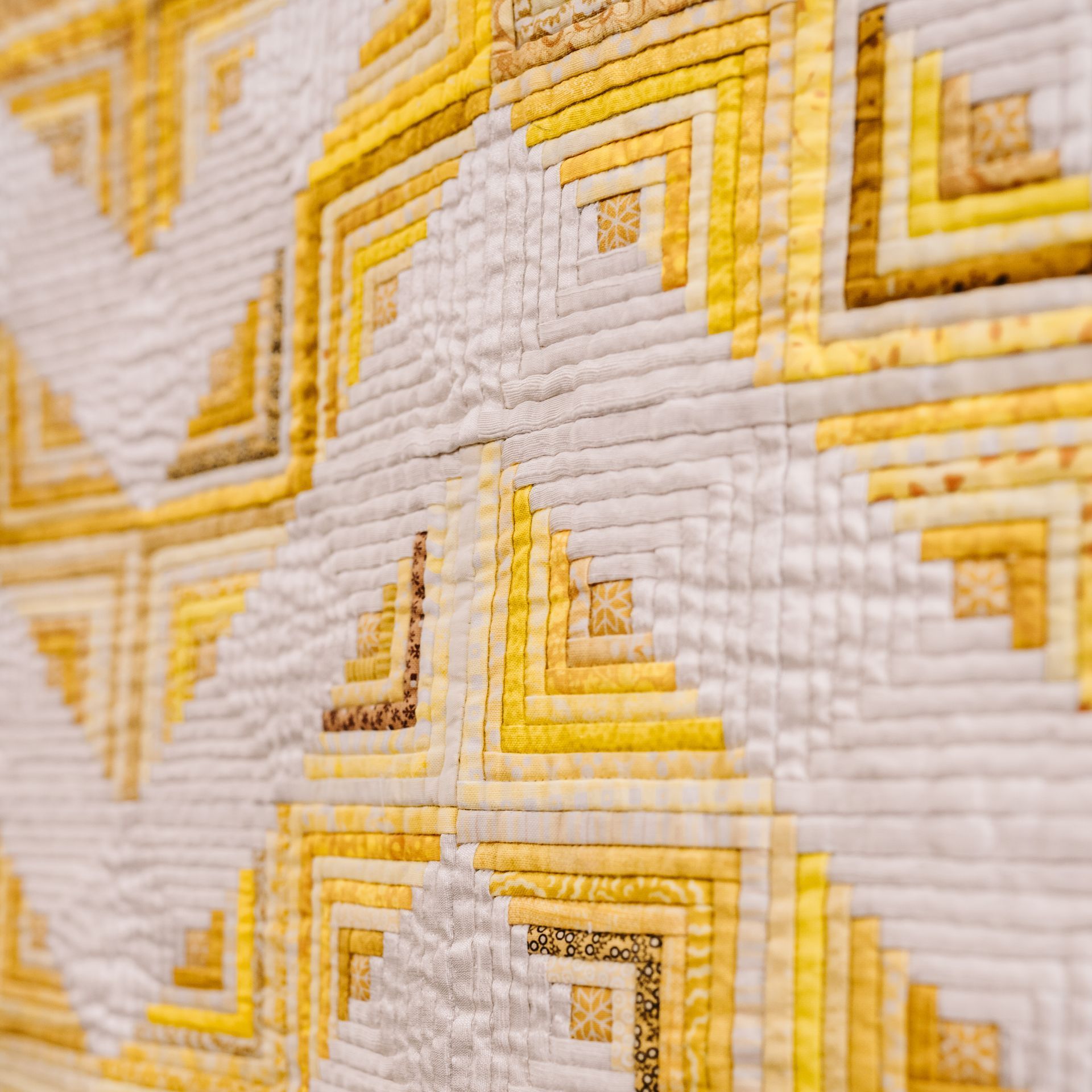Quilt History Snippets August 2025
What: Review of Uncoverings 1994, Volume 15 of the Research Papers of the American Quilt Study Group, edited by Virginia Gunn
Topic: “Kit Quilts in Perspective”
Author: Anne Copeland and Beverly Dunivent
Copeland and Dunivent, from the outset, declare their intent to dispel the “negative images” imposed upon the role of kit quilts in the history of American quiltmaking. Indeed, they declare, “Documented examples illustrate that kit quilts have never lost their appeal to quiltmakers and quilt viewers.” Furthermore, they claim that “kits seem to have played a more instrumental role in the entire quilt revival and the continued interest in quiltmaking than has been previously recognized.” [p. 141] And, they suggest the evidence suggests that kits “have been in existence since the turn of the century.” [p. 142] Their source for this declaration is Quilters Hall of Fame inductee, Cuesta Benberry. Given that information they then note that in the 1920s and 1930s the characteristics of kit quilts that most of us are familiar with became standardized. There follows descriptions of the range of styles, materials, and markings commonly found in manufactured kits. These included stamped fabrics representing the various parts and pieces, die-cut parts and pieces, embroidered kits, and trapunto-style whole-cloth kits. [p. 142-144]
Some commentators are quoted declaring the “uncreative aspects of quilt kits.” [p. 145-147] Among these were contemporary art historians Penny McMorris and Michael Kile, and New York quilt dealers Thomas K. Woodard and Blanche Greenstein. The involvement of Dorothymae and Harold Groves, “prominent” Kansas City, MO, dealers” and publishers of quilt patterns and quilt show organizers, is briefly mentioned. [p. 147] The Groves’s involvement over many years of our contemporary quilt revival deserves more research and reporting. It was significant, particularly in the geographic and culturally broad middle America.
One aspect of the popularity of kit quilts I’d not thought about is that the production of the kits “represented twentieth-century technology during a time in our culture when the assembly line was popular and there was little prejudice against repetitiveness.” Furthermore, some kit quilt patterns were described and published in commercial print materials like the book Great American Quilts and popular magazines. [p. 148]
Designers and sources of quilt patterns and materials are listed and described in detail along with dates, locations, and their company histories. There are names you will recognize and some you may not have known about. Also, there is discussion about how kit quilts served as a training ground for beginner quilters. This would have been a previously unacknowledged, but significant contribution to the continuation of the quilt-making activities among American women across all classes into and through the twentieth century. It seems possible that quilt kits contributed significantly to the democratization of quilt-making in America in an era when nineteenth century practices were fading or being lost to modern women for whom homemaking was no longer the primary focus of their daily lives, especially during and after WWII in mid-century.
This is a thought-provoking and resource rich article that should be on all reference lists for quilt historians. I hope you enjoy reading it and learning as much from it as I did.
Share Post




